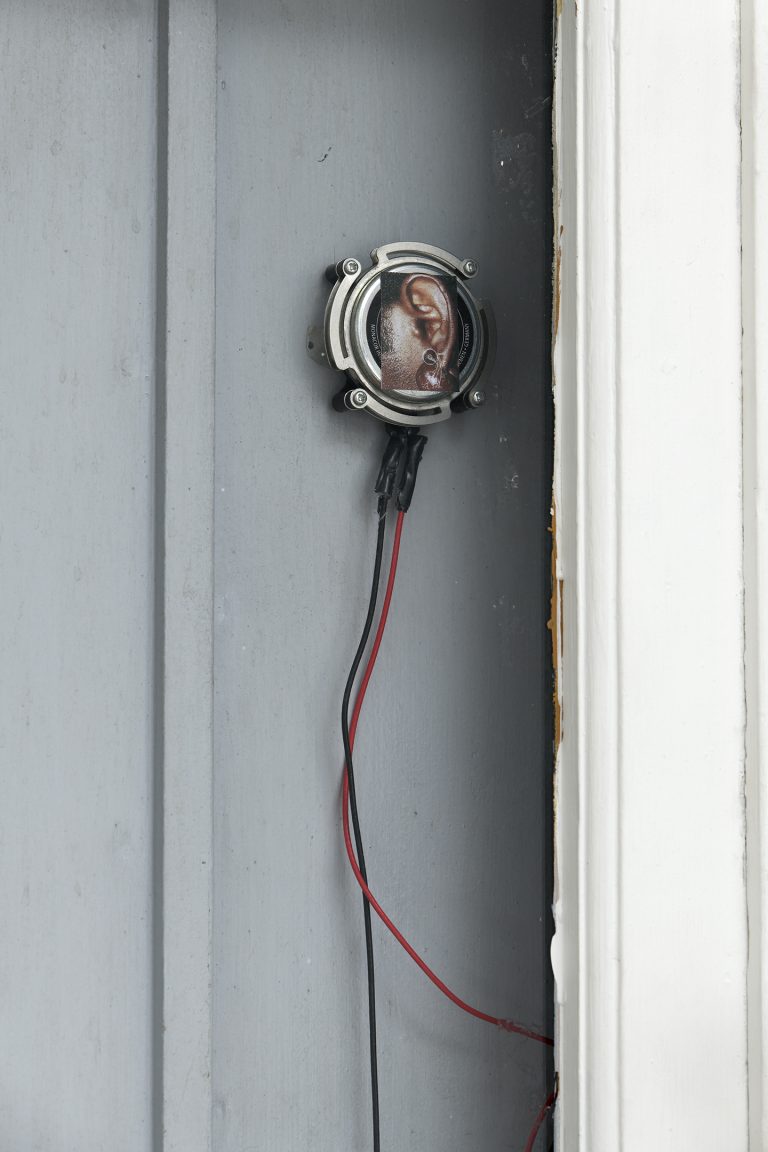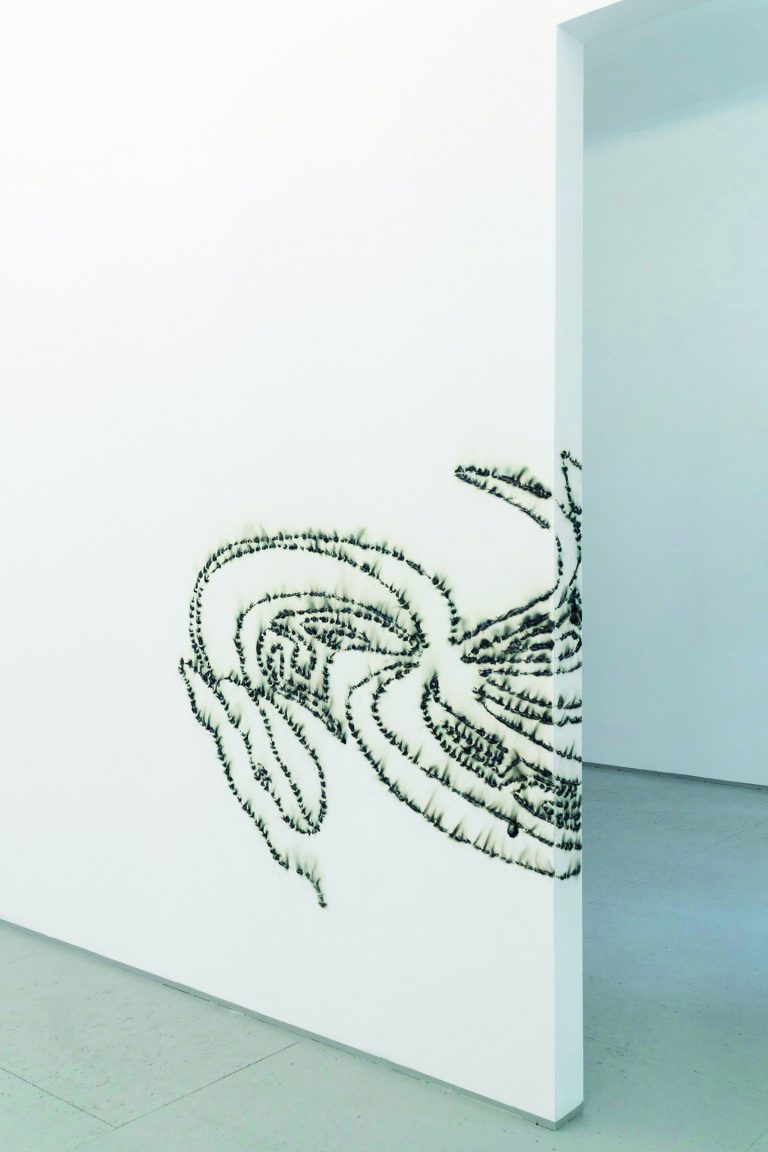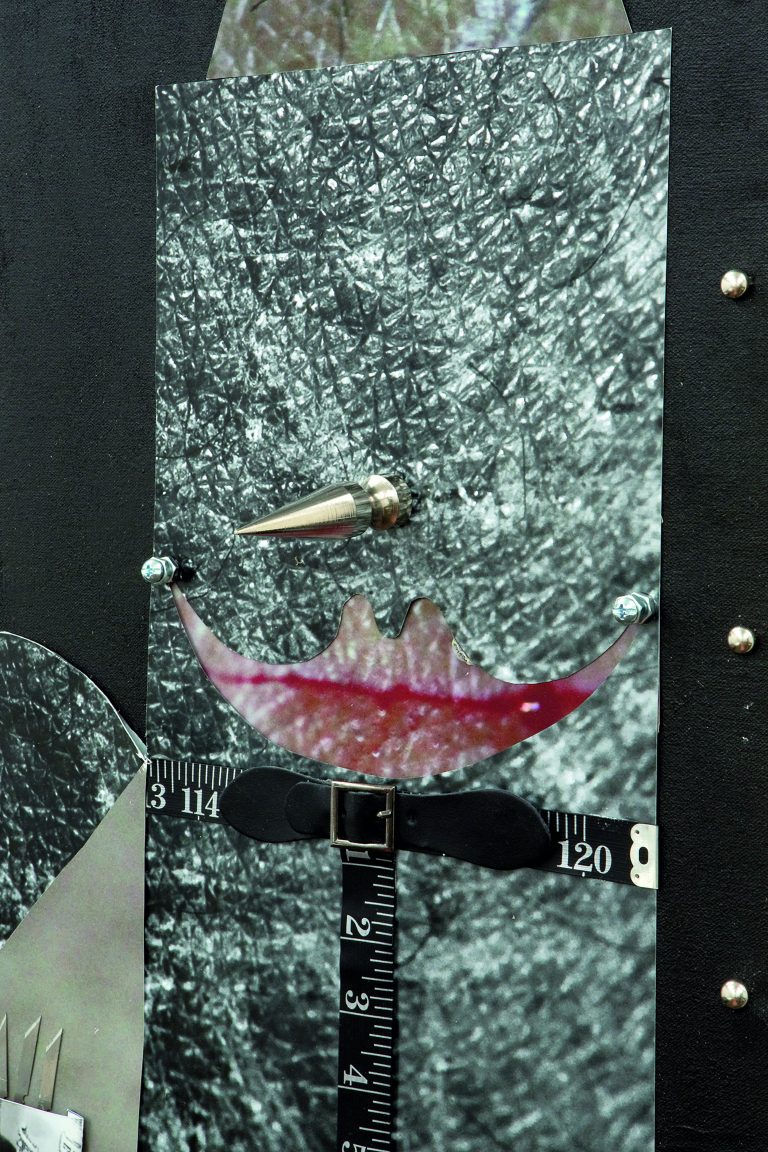The Picker: Cudelice Brazelton IV
by Leonie Radine

Cudelice Brazelton IV, Counterpoint (detail), 2021. Courtesy: the artist;
Sans titre (2016), Paris; Wschód, Warsaw

Cudelice Brazelton IV, Helix, 2020, Violent Groom installation view at Wschód, Warsaw, 2020. Courtesy: the artist and Wschód, Warsaw
The Picker (2020), Undergird (2019), Helix (2020), Barb (2021)—Cudelice Brazelton IV’s titles already suggest that his works get under one’s skin. His assemblages and painting/collages have a piercing quality and leave a mark. They can be tiny or large-scale, but no matter what the size, they pervade the space with their bodily presence. His works bear traces of various subcultures and current discourses and events, though they are neither illustrative nor documentary. Blackness, punk, DIY, and queer club culture are not only referenced in Brazelton’s practice, but constitute its driving force. Whether absurdly humorous or eerily dark, adorning or cra”y, his works sharply point to what lies behind or in front of the surface of a body (of work).
Brazelton bridges the past, present, and future lives of discarded or displaced subjects, objects, images, and sounds—all haunted by the question of their identity in a larger continuum of time and space. Even though his material is strongly related to his personal background and the spaces he inhabits, his work remains open to the many layers matter can possibly unfold. He operates at the interface of skin and flesh, between surface and substance, and creates a hybridity of humanity, technology, and objecthood.
Oscillating between abstraction and figuration, The Picker is one striking example of Brazelton’s enrapturing painting/collages on found textiles stretched on canvas—here, a piece of checkered wool recalling a man’s shirt or the lining of old-school trench coats. An oval-shaped cutout reveals a surrealistic distorted face with eyelike features drawn on black painted wood. The visage is framed by beige carpet and rivets, and a black bolt sticks out like the pointed bill of a swordfish. An inkjet print of a Black hand is waving from its right temple. A buckle is loosely tied to it with a strand of black hair, pointing in turn to a rust-colored belt attached to the wool and carrying images of a pierced ear and a reptile-like rivet formation on a black leather garment.

Cudelice Brazelton IV, Leatherettes (Tunic Ash) (detail), 2019. Courtesy: the artist
and Deli Gallery, New York
In his essay “On Repetition in Black Culture” (1981), James A. Snead describes the magic of repetition and the “cut” in Black culture as making room for “accident” or “rupture” inside the system itself, whereas European culture tends to cover up “the repeating constituents within” and “instead maintains the illusions of progression and control at all costs.”
(James A. Snead: “On Repetition in Black Culture,” in Black American Literature Forum 15, no. 4 (1981): 146–54.)

Cudelice Brazelton IV, Helix (detail), 2020. Courtesy: the artist and Wschód, Warsaw
This might give a key to Brazelton’s methodology of cut, rupture, accident, repetition, and manipulation. The works center on processes of de- and reconstruction, which also manifest in a reassembling of elements in different locations. They not only flow into each other but also trace back to the artist’s biography. He was born in Texas, grew up in Columbus, Ohio (along the Rust Belt), and used to sustain his practice as an artist with temporary jobs in a steel factory. Equally formative was the profession of his mother, who ran a hair salon in their family basement.
Full article in Mousse Magazine
